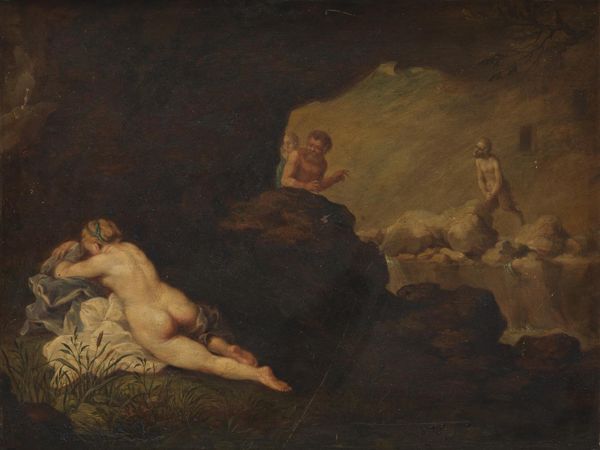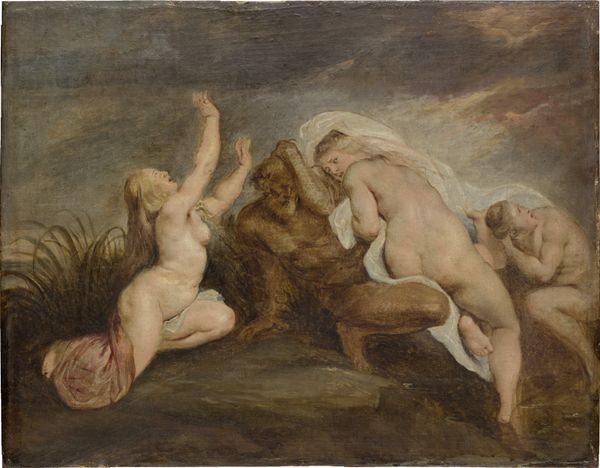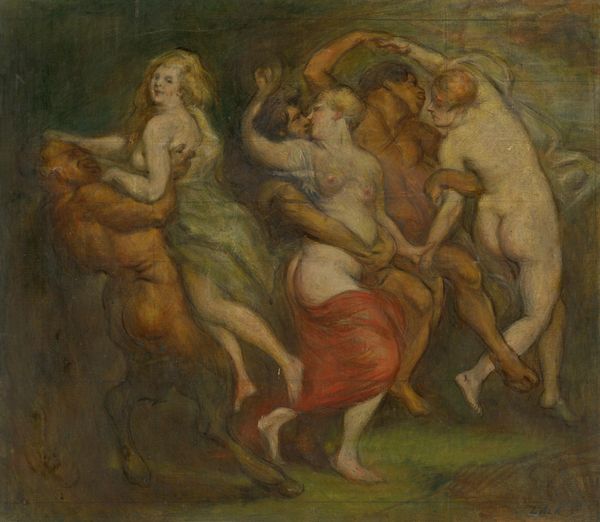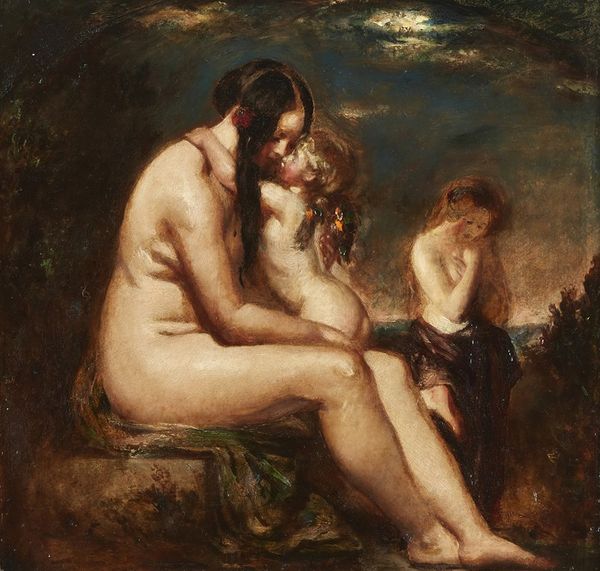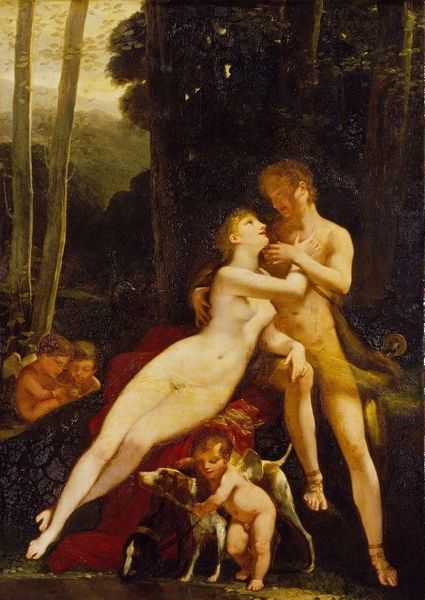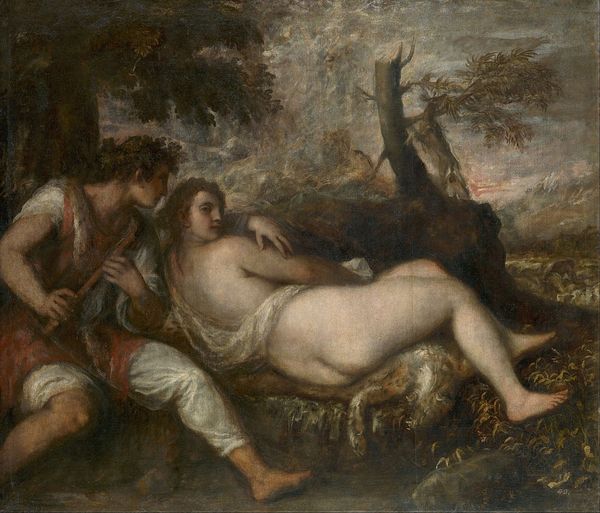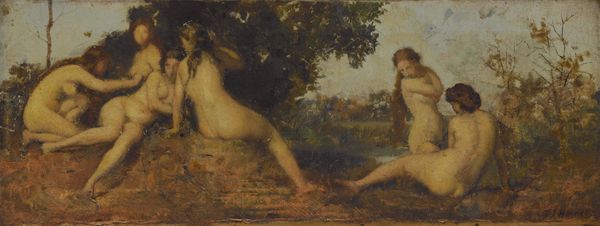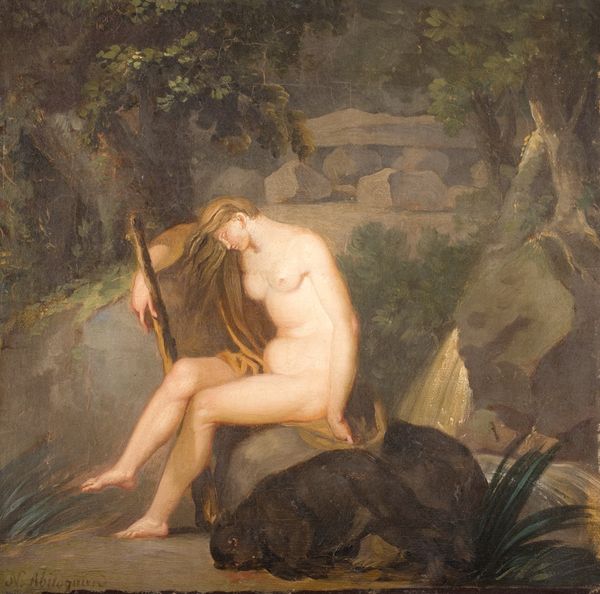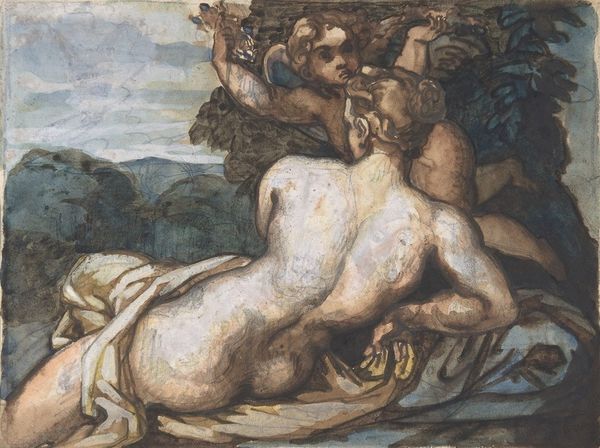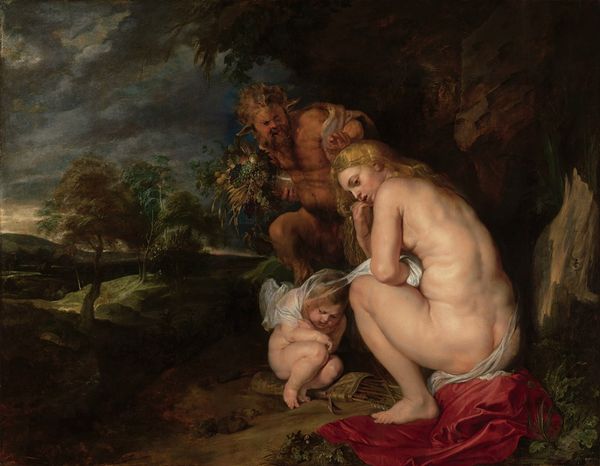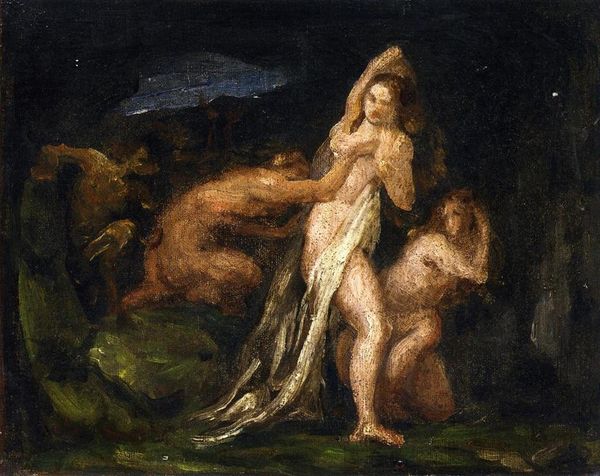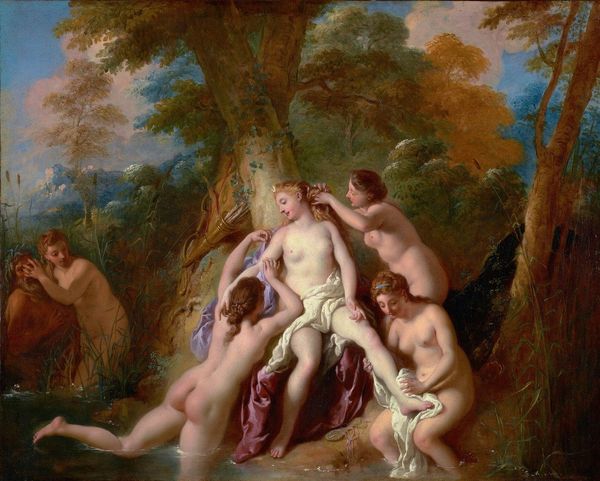
oil-paint
#
allegory
#
baroque
#
oil-paint
#
figuration
#
oil painting
#
neo expressionist
#
mythology
#
genre-painting
#
history-painting
#
nude
#
portrait art
#
expressionist
Copyright: Public domain
Editor: Okay, so this is "Classical Copy," an oil painting by Georgi Mashev, its date is unknown. The scene depicts reclining female nudes and, is that a satyr lurking in the background? It definitely gives off this tense, unsettling vibe. What are your thoughts on this work? Art Historian: It's fascinating how Mashev engages with classical mythology. I notice how the composition echoes earlier Baroque paintings depicting similar scenes, likely a reference to Diana and her nymphs, which often served as vehicles for male fantasy. Does this ‘copy,’ as it's called, replicate or critique that tradition, would you say? Editor: Hmmm, good question. At first glance, the painting just seemed like a somewhat creepy scene of voyeurism with the lurking satyr, however I notice the almost Neo-expressionistic style the use of nude figures evokes questions on objectification versus celebrating the human form? Art Historian: Precisely. This tension is exactly what I think makes it an engaging piece. Look at the satyr – his gaze and shadowed presence imply an imposition of power. It's impossible to separate an image like this from centuries of artistic and cultural objectification of women, wouldn't you agree? And consider who had access to view such paintings historically – often wealthy, powerful men. Editor: Right, so it brings up discussions of not only gender roles, but socio-economic power dynamics also? It definitely complicates the traditional reading of idealized beauty. This changes everything Art Historian: Indeed. By directly engaging with art historical traditions and displaying that the image may appear beautiful initially but has questionable historical interpretations for specific audiences shifts how we think about its role and legacy. What was made acceptable or desirable within its own social context versus today are quite contradictory Editor: I learned how historical context impacts our interpretation but how the message may not always transfer through to future audience effectively, its thought provoking Art Historian: I found this exercise really interesting too - its interesting how engaging with artwork beyond their aesthetics expands perspectives in new interesting directions
Comments
No comments
Be the first to comment and join the conversation on the ultimate creative platform.
